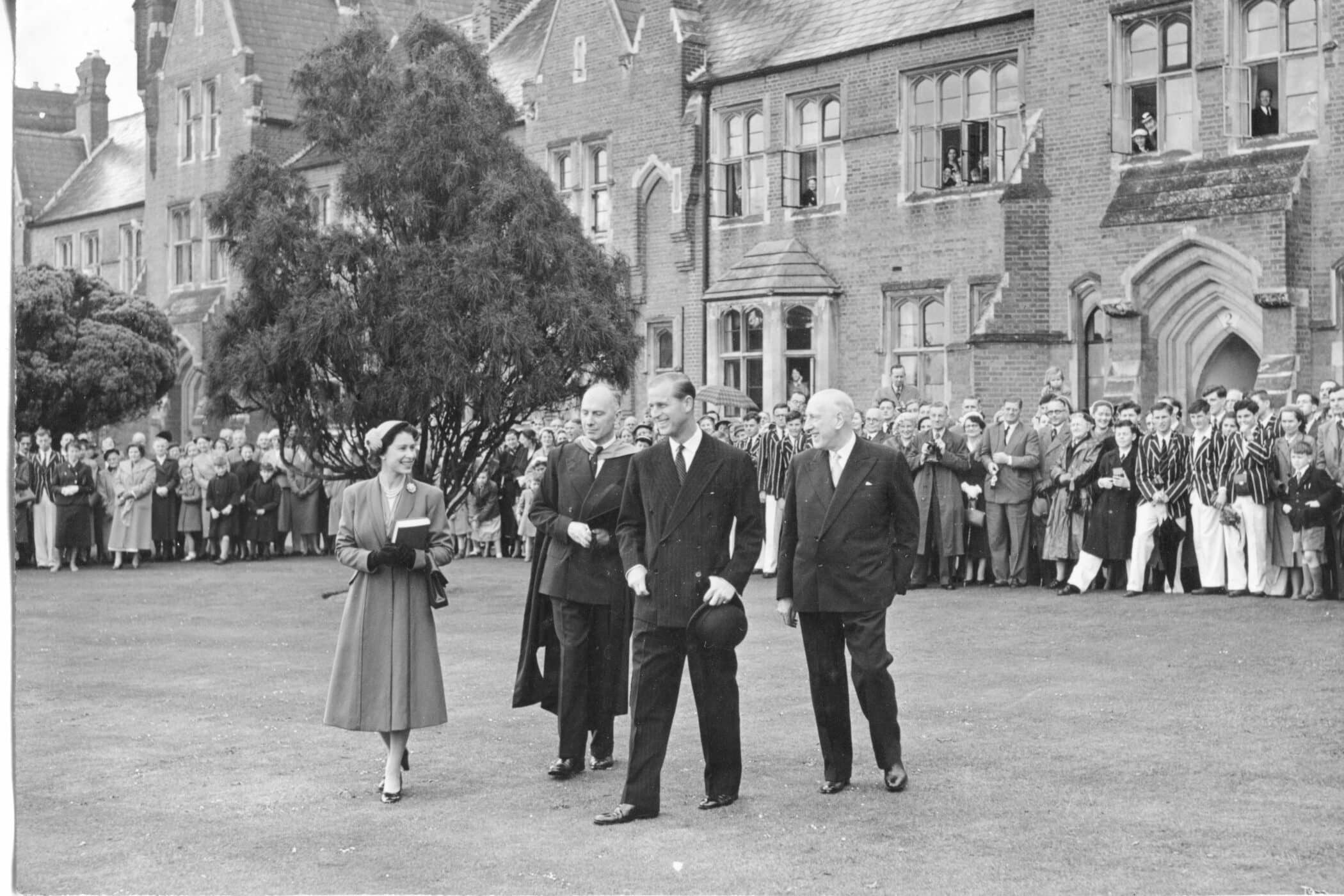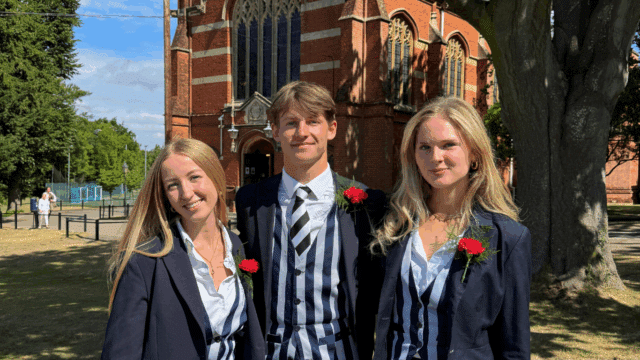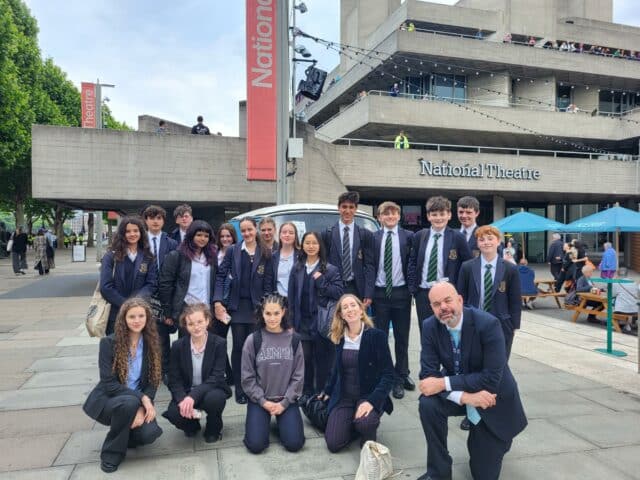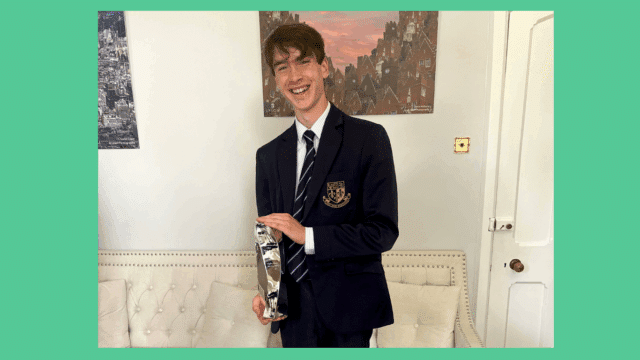The first Royal visitor to the College was His Royal Highness Prince Albert, who had been asked in 1853 to lay the foundation stone before building work commenced. Sadly, he was ill with measles on the day and Earl Manvers, the first President of the College, stood in for him.
By 1855 Queen Victoria had agreed to become the Patron of the College and it was decided the announcement would be made at the opening of the College. On Monday 25 June 1855 the College was officially opened in front of huge crowds. HRH Prince Albert, accompanied by his son, also Prince Albert (later Edward VII), declared the College open. They toured the College and accepted donations to support ‘Foundationers’ – the first boys who attended the school on fully funded bursaries. The impressive announcement of Royal Patronage was received with much enthusiasm and the Royal Arms were added in carved form to sit above those of the Founder, Dr John Propert and the President of the College, Earl Manvers, on the front of the Main Building. These can still be seen today.
In his opening speech, Prince Albert spoke of the College in glowing terms: “It has given me great pleasure to attend here this day to open this valuable institution. Gratitude to the members of the Medical Profession is a feeling in which all must participate and I have gladly witnessed the early and general support which had been given to this undertaking.”
This was the first of many Royal visits.
Edward VIII
In 1895 HRH the Prince of Wales (later Edward VII) visited to lay the foundation stone of the new Lower School, which was included as part of an extensive development plan at the College. He was accompanied by his wife HRH Princess Alexandra (later Queen and Empress-Consort) and their daughter Princess Victoria of Wales.
A special train conveyed the Royal party to Epsom from Victoria Station. 1,000 guests were invited for the occasion and the College Rifle Corp performed their first Guard of Honour.
Fundraising for the College and its residents continued in a variety of ways, from concerts, variety show performances, dinners and an annual Festival. It was in advance of his attendance at the 1903 Festival Dinner that HRH The Prince of Wales (later George V) unofficially visited the College. He was escorted to Epsom College in the carriage of the President of the College, The Right Honourable the Earl of Rosebery. A thorough tour was given by Headmaster Hart-Smith and Dr Constantine Holman, Treasurer of the College.
Roaring 20s
The 1920s and 1930s brought a great period of development and growth for Epsom College. In conjunction, academic success was in line with sporting and co-curricular accomplishment creating a well-rounded environment. Drama was brought to the fore through The Mermaid Society, an orchestra was established and the Debating Society thrived to name just a few. Alongside, cricket, rugby and rifle shooting were thriving. Significant sporting victories were boosting the College’s reputation and facilities had to be upgraded accordingly.
Therefore, a new cricket pavilion was built. It cost £3,000, provided by subscriptions from parents and Old Epsomians to provide modern (for the time) facilities for nearly 400 boys.
HRH Prince Arthur of Connaught, grandson of Queen Victoria, formally opened the new Cricket Pavilion in 1927. In his speech he said that members of his family had been associated with the College since the middle of the previous century. He went on to talk about the combination of work and play afforded at Epsom, which prepared children for the future. He also spoke about the gift of service to the community as “it gave the opportunity of doing splendid and unselfish work.”
The Queen’s First Visit
In 1955 HM The Queen, accompanied by HRH The Duke of Edinburgh, paid her first visit, to mark the Centenary of the College. They took great care in examining the College and were escorted on a full tour which finished in the John Propert Library, now the Teacher’s Common Room, for afternoon tea.
Both Royal visitors planted trees in the College grounds, which are still thriving today. Mr A. E Ellis, Head of Science, wrote a detailed account of the day and recorded his thoughts; “The Queen has been to Epsom, and our corporate and individual lives are richer. If only she could know, how much worthwhile her arduous job would seem.”
HM The Queen came for a second visit in 1989. She formally opened the Ronald Raven Sports Centre and spent much time viewing the new sporting facilities on offer. She also visited The John Piper Art School which provided a vibrant location to view a showcase of exceptional creative work. A further tree was planted by Her Majesty, identifiable by its plaque in the school grounds. It was another truly memorable day for everyone at Epsom College.
The reintroduction of a Lower School at Epsom College in 2016 and formally opened by HRH Prince Richard, Duke of Gloucester in 2017 brought the school full circle to offer a complete education not seen since the 1960s. It is poignant to remember it was the Duke of Gloucester’s grandfather, George V, that had visited in 1903 and led such a successful Festival Dinner.
The welcome introduction of even co-educational numbers into the modern and progressive building signalled a new chapter in the life of Epsom College. An eloquent speech by the Duke concluded that: “Any time that a building is developed it is a sign of success and growth. This new Lower School building is a sure sign of Epsom College’s continued success – it reflects the College’s outstanding reputation.”
The legacy of each Royal visitor serves to reinforce the enormous honour that the Epsom College community feels towards all our Royal visitors and especially our Patron, HM The Queen.





